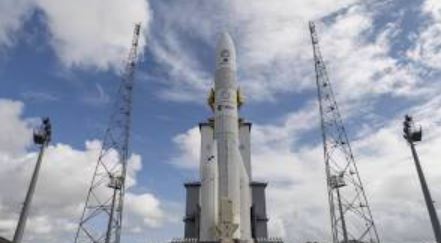China’s Ambitious Space Endeavor: A Thousand Sails Set to Conquer the Sky
China has launched the first batch of satellites for its “Thousand Sails Constellation,” marking a significant step in the country’s ambition to establish its own version of SpaceX’s Starlink network. This bold move, spearheaded by the state-owned Shanghai Spacecom Satellite Technology (SSST), underscores China’s determination to become a dominant player in the burgeoning low Earth orbit (LEO) satellite market.
The Rise of LEO Satellites: A New Frontier in Connectivity
LEO satellites, operating at altitudes of 300km to 2,000km, have revolutionized the telecommunications industry by offering cheaper and more efficient transmission than traditional geostationary satellites. The success of SpaceX’s Starlink network, which provides near-global internet coverage through a constellation of over 5,500 LEO satellites, has spurred other nations, including China, to invest heavily in this technology.
China’s “Thousand Sails Constellation”: A Strategic Imperative
The “Thousand Sails Constellation” project is a manifestation of China’s strategic imperative to achieve self-reliance in critical technologies, including satellite communications. By developing its own LEO satellite network, China aims to reduce its dependence on foreign providers and ensure secure and reliable communication infrastructure for its military, government, and commercial sectors.
Chart: Comparison of Starlink and Thousand Sails Constellation
| Feature | Starlink | Thousand Sails Constellation |
|---|---|---|
| Operator | SpaceX (private) | Shanghai Spacecom Satellite Technology (state-owned) |
| Number of satellites (planned) | 42,000 | 13,000 |
| Altitude | 550 km | 300-2,000 km |
| Primary use | Broadband internet | Broadband internet, military communications, remote sensing |
| Launch date | 2019 | 2023 |
Geopolitical Implications: A New Space Race?
China’s foray into the LEO satellite market has raised concerns about a potential new space race with the United States. Control over the LEO domain carries significant military and strategic implications, as these satellites can be used for various purposes, including surveillance, communication, and navigation.
The recent conflict in Ukraine, where Starlink played a crucial role in providing communication infrastructure to Ukrainian forces, has further highlighted the strategic importance of LEO satellite networks. This has prompted some Chinese commentators to view Starlink as a tool of American “space hegemony,” prompting calls for China to develop its own capabilities to counter this perceived threat.
Technological Prowess and Economic Opportunities
Beyond geopolitical considerations, China’s “Thousand Sails Constellation” project also represents a showcase of the country’s technological prowess and its ambition to become a global leader in the space industry. The successful launch of the first batch of satellites is a testament to China’s capabilities in rocket technology, satellite manufacturing, and space-based communication systems.
Furthermore, the development and deployment of LEO satellite networks can create significant economic opportunities for China. The demand for high-speed internet connectivity, particularly in remote and underserved areas, is growing rapidly. By providing affordable and reliable broadband access, China’s “Thousand Sails Constellation” could bridge the digital divide and unlock new avenues for economic growth and social development.
Conclusion: A New Chapter in Space Exploration
China’s launch of the “Thousand Sails Constellation” marks a new chapter in the country’s space odyssey. This ambitious project, driven by strategic imperatives and technological advancements, is set to reshape the global satellite communications landscape. While concerns about a potential space race and geopolitical tensions persist, the project also holds the promise of enhancing connectivity, fostering innovation, and expanding the frontiers of human knowledge.
As China continues to invest in its space program, the world watches with anticipation, eager to witness the impact of this rising space power on the future of space exploration and technological progress.

Basant Kumar Sahoo is a seasoned writer with extensive experience in crafting tech-related articles, insightful editorials, and engaging sports content. With a deep understanding of technology trends, a knack for thought-provoking commentary, and a passion for sports, Basant brings a unique blend of expertise and creativity to his writing. His work is known for its clarity, depth, and ability to connect with readers across diverse topics.



